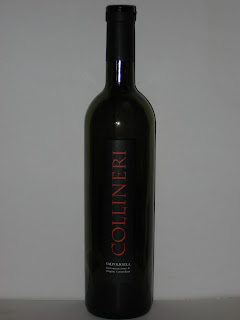Alright, so we've been back from France for some weeks now, and I have neglected to write about the trip at all. Our triumphs and travails, the expansive countryside in the Loire valley, the wines... I have not written a word on any of these topics. My main reason was that I needed to contemplate our journey, consider my tasting notes, and just take some time to focus on the numerous impressions gained throughout before weaving them into a cohesive whole. That process is complete, and so here is a brief sketch of our time in the wine capital of the world.

After arriving at Paris' Charles
de Gaulle airport by way of an
easyJet flight from London, we were picked up by our friend,
Clothilde, and driven to a beautiful house, one of only 15, in a tiny village nestled in the hills of Champagne. We spent the night there, catching up over a delicious pasta dinner and a few glasses of simple red Bordeaux before retiring to our room at the top of a close spiral staircase. The next morning, we drove to
Épernay, one of the central production regions for fine Champagne wines.

Built on hills of pure chalk stone, the town belonged to the archbishops of
Reims before changing hands in the 10
th Century, coming under the ownership of the counts of Champagne. The central quarter of the town is the oldest, featuring narrow, irregular streets which give way to more spacious ones lined with gorgeous villas. Along the Avenue
de Champagne, the major Champagne houses of this region also stand in a dignified procession of fenced courtyards. We visited the following producers:
Mercier, Pol Roger, Louis
Roederer, and
Moët et Chandon.
Mercier in particular proved very hospitable.


We spent the next two days in
Reims, a city famous for its fine cuisine and known worldwide as a major center for fine Champagne. There we received a private tour of the
G.H. Mumm cellars, a network of caves extending 11 miles through solid chalk stone. Our tour culminated in a guided tasting of most of the G.H.
Mumm Champagnes: the G.H.
Mumm Cordon Rouge, the G.H.
Mumm Cordon Rouge Vintage 1999, the G.H.
Mumm Cordon
Rosé, the
Mumm de Cramant and G.H.
Mumm's Grand
Cru. I can admit that the
G.H. Mumm Grand
Cru made me cry a little. But more about these in another post.


Next came the highlight of the trip, the Loire Valley. We took the train to Orleans, rented a car (god, I loved that dependable little European take on Ford craftsmanship), and drove to
Sancerre before checking into our charming bed & breakfast within the village itself, atop a hill overlooking the ancient vineyards, whose ordered rows of vines stretched out into the hazy green distance. While we only visited one actual vineyard, we tasted a wide variety of
Sancerre, including
heart-piercingly delicious
Sauvignon Blancs, bright
rosés, and sensuous
Pinot Noirs reminiscent of fine Burgundy.


Never before have I tasted wines with such connectedness, such exquisite expressions of
terroir. Moments came where I wanted to dance; the potency of the flavors and aromas at play in the glass urged physical displays of energy in turn. These wines were like the village of
Sancerre itself: humble and yet brilliant, daring in their intensity, and complex enough to grab my palate and attention like no other wines have ever done before. Lyndsey and I would often look at each other in unfeigned amazement. O American palates! If only wine like this was made at home...

Our visit culminated with a dinner at the finest restaurant in
Sancerre: the Restaurant La Tour. We had the tasting menu, which ended up meaning a seven course meal including dessert and cheese, and five glasses of fine wine apiece. The dinner lasted three hours, from 8:00pm until 11:00pm. This was cooking as high art. I will not attempt to describe how good it was. The menu, in course order: egg yolk with spicy whipped cream and maple syrup in the shell,
foie gras and pear puree poached in spices and torched with a creme
brulee torch, with pan fried
foie gras on the side, white kidney beans with smoked haddock and
bulot in a soup of chicken stock and lemon seafood foam, sea bass with parsley and artichoke puree and lobster seafood foam with
salsifi, smoked ham ice cream in artichoke soup with parsley puree and chives, veal in sweet bread drizzled in mustard sauce with white and green asparagus and carrot puree, a cheese platter including
Crottin de Chavignol (the local goat cheese, the world's finest), Roquefort, Brie, Camembert, and two others whose names I cannot recall, and dessert: the
Cappuccino, coffee ice cream with chocolate
ganache, almond pistachio cake and fresh
chantilly. We then had espresso. I can be fairly certain that, barring an influx of cash at present unimaginable, I will never eat that well again. It was bliss.
The wines we had? A 2005
Domaine des Berthiers Cuvée D'Eve, made by the father of Loire wine luminary
Didier Dagueneau, and named for his mother. This was paired with the foie gras and white kidney bean soup. The sea bass shared our table with a 2008 Jack
Pinson Domaine de la
Voltonnerie, a
Sauvignon Blanc from the small village of
Crézancy. Accompanying our smoked ham ice cream and artichoke soup was the best
Sancerre we had on the trip... in fact, the best
Sauvignon Blanc I've ever tasted: the 2006 Vincent
Pinard Harmonie, estate bottled at the vineyard of
Bué. Finally came two exquisite Pinot Noirs: a 2005 Pierre Prieur Cuv
ée Mar
échale Sancerre Rouge, and a 2006 Domaine Vacheron Sancerre Rouge, which went perfectly with the veal.
All in all, a stunning trip. The next post will contain specific tasting notes on the most memorable wines we encountered.













